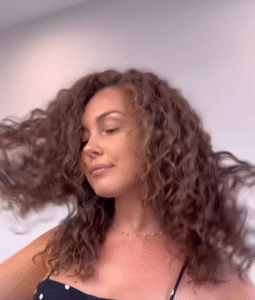Hair has always been more than strands growing from the scalp—it is identity, memory, and expression. Yet for many people, the relationship with their hair begins as a battle. Years of blow-drying, straightening, bleaching, or chemical treatments leave locks weak and lifeless, while the endless pursuit of “perfect” styles drains both confidence and patience. The damage shows not only in split ends and dullness, but in the way a person begins to see themselves in the mirror.
A true hair transformation begins not with expensive products or drastic cuts, but with a shift in perspective. It starts with acknowledging that hair is not meant to be forced into unnatural shapes every day. Instead, it thrives when it is cared for, respected, and allowed to exist in its natural form.
For those who have struggled with thinning, dryness, or breakage, the first step is healing. That means setting aside the harsh shampoos that strip natural oils and embracing gentle cleansers that restore balance. Conditioners become less about coating strands and more about infusing moisture deep within. Weekly masks, rich with proteins and vitamins, repair what years of heat and chemicals took away. Slowly, hair begins to regain its softness and strength.
Equally important is learning the value of protection. Heat tools once used daily are now reserved for special occasions, replaced with air-drying methods, silk pillowcases, and protective styles. Oils like argan, coconut, or jojoba seal in hydration, giving strands shine while preventing further breakage. It is not just about products—it is about creating rituals that nurture instead of punish.
Styling, too, takes on a new meaning in a transformation. Instead of bending hair into the latest trend, people are beginning to embrace what naturally grows. Straight strands can be celebrated for their sleekness, waves for their movement, curls for their bounce, and coils for their strength. Each texture has beauty, but it only comes alive when treated with patience and care.
The emotional impact of this transformation is powerful. People who once hid behind straighteners or extensions find new pride in what they already have. They begin to walk into rooms without feeling the need to “fix” their appearance first. Compliments shift from “your hair looks different” to “you look confident” because the change is more than physical—it radiates from within.
Social media has played a huge role in inspiring this shift. Thousands of transformation stories circulate daily, where people post before-and-after photos that show dull, damaged strands evolving into full, vibrant hair. The difference is not just in shine—it is in the expression on their faces. They smile wider, stand taller, and radiate pride. These stories encourage others to take the same leap, to trust the process of patience and care.
Ultimately, a hair transformation is not just about the hair itself. It is about reclaiming identity, self-expression, and confidence. It is about breaking free from unrealistic standards and choosing health over damage, authenticity over imitation. When hair is allowed to thrive in its natural form, it becomes more than an accessory—it becomes a crown.
Every strand tells a story: of struggle, of healing, of renewal. And when nurtured, those strands come together to form a living symbol of resilience and beauty. That is the power of transformation—not just in the mirror, but in the soul.


